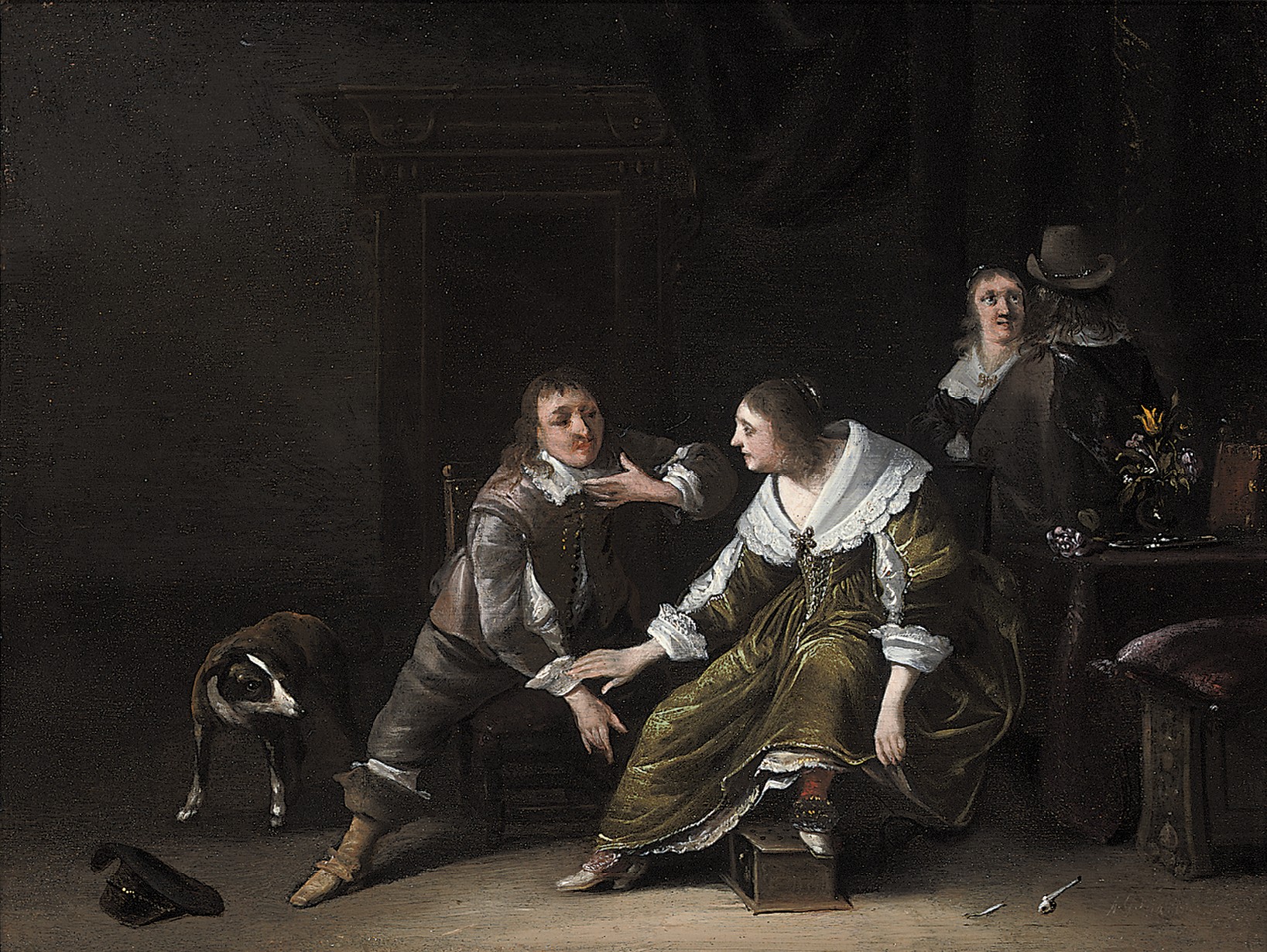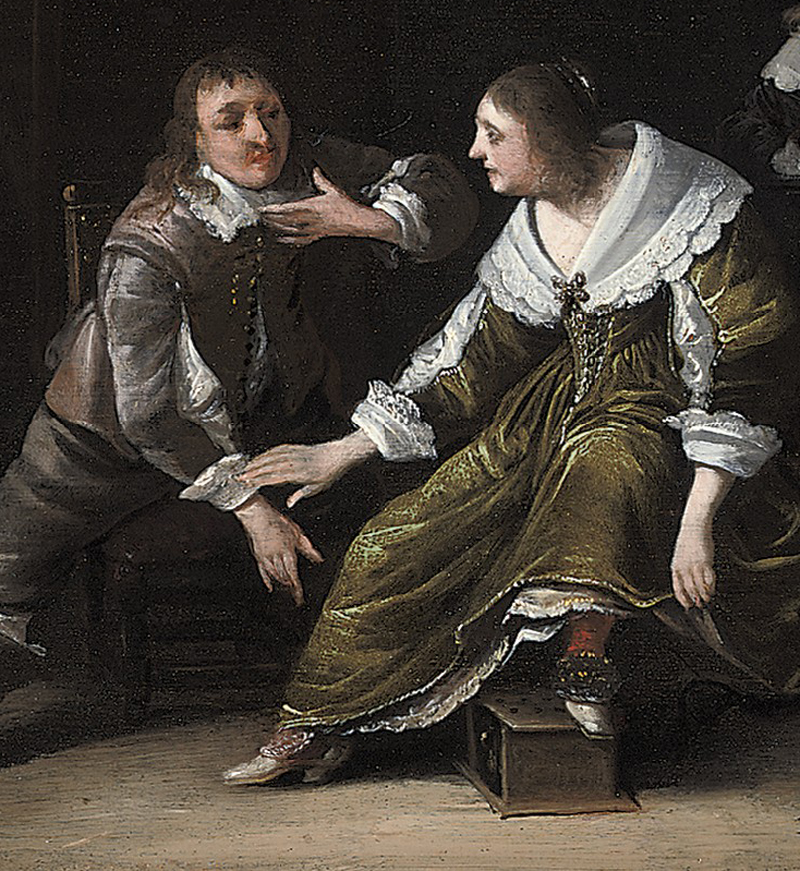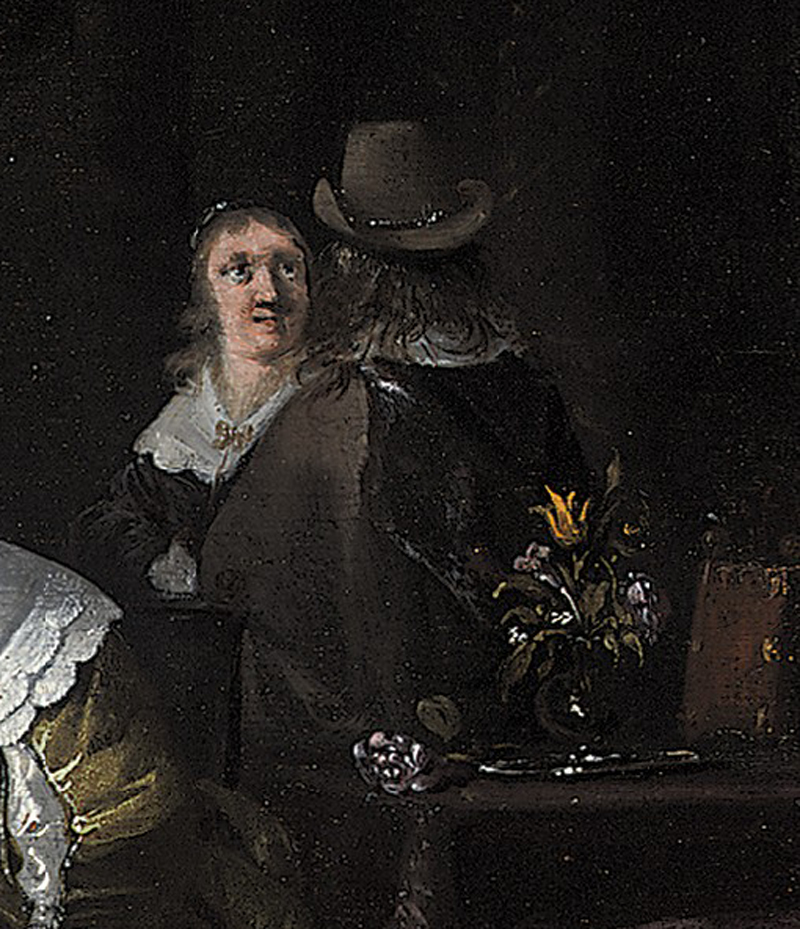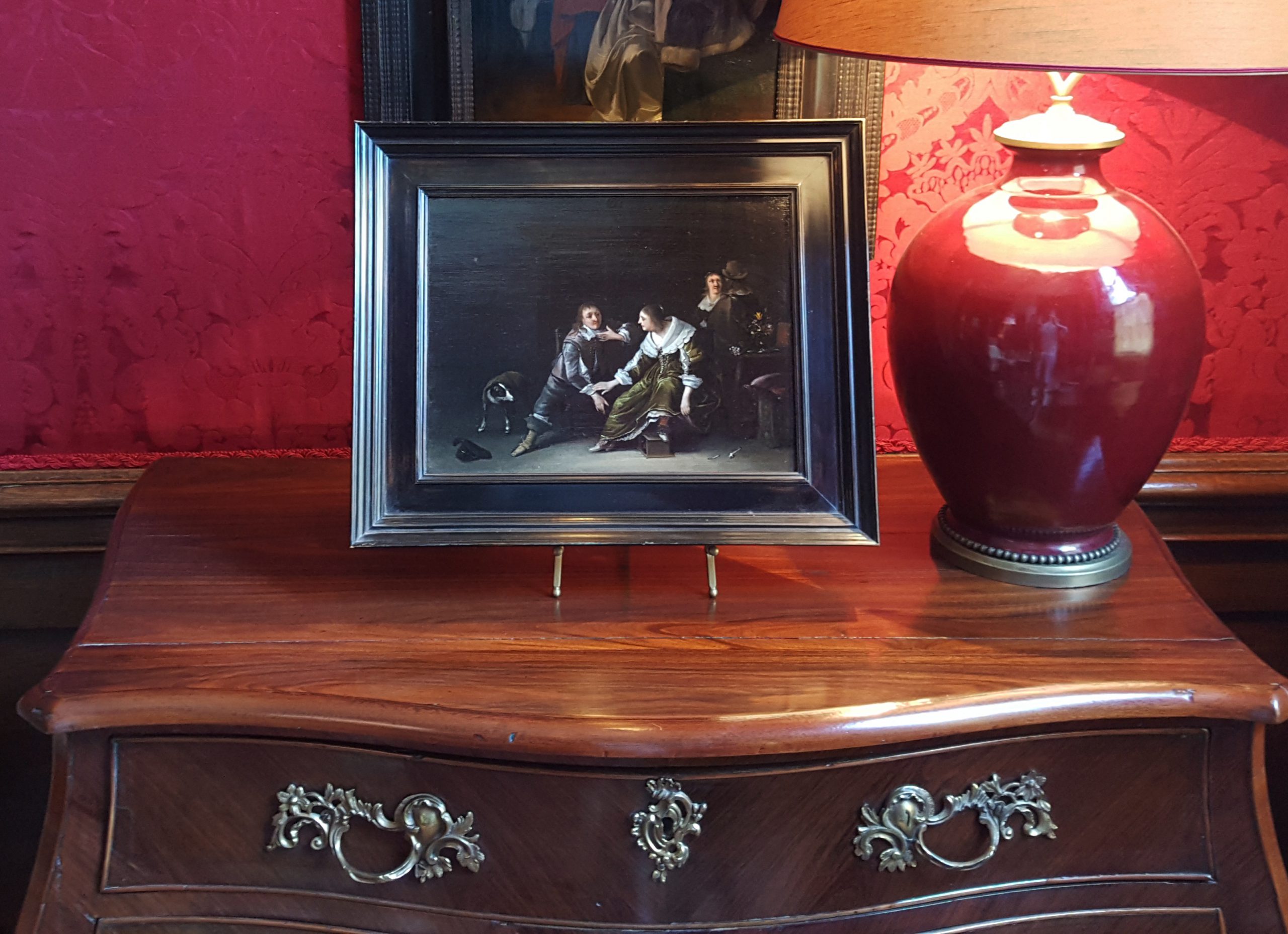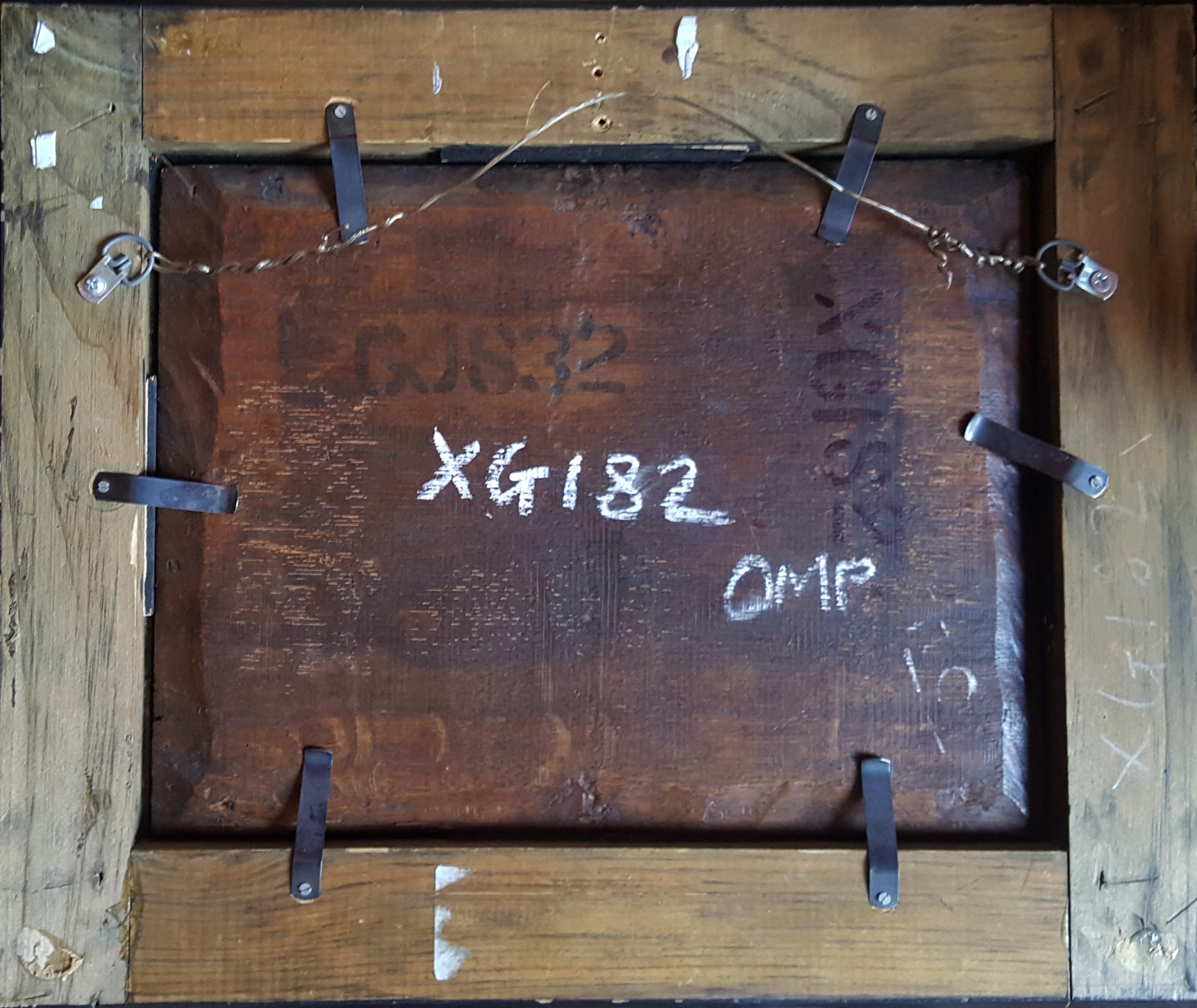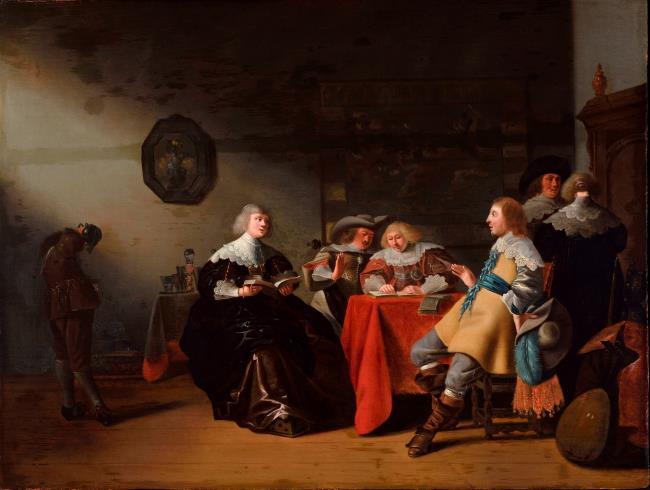ANTHONIE PALAMEDESZ (Delft 1601 – 1673 Amsterdam)
Anthonie Palamedesz (Delft 1601 – 1673 Amsterdam)
Elegant Company in an Interior
Oil on panel, 23.2 x 30.8 cm (9.1 x 12.1 inch); presented in an ebonized frame of 17th-century Dutch model
Indistinctly signed ‘A. Pa...’ (lower right)
Provenance
Private collection, England; Christie’s, London, Old Master Paintings, 11 July 2008, lot 104; private collection, The Netherlands
***
Anthonie Palamedesz primarily painted portraits and genre works, while his brother Palamedes Palamedesz was a battle scene painter.1 Anthonie was taught the art of painting in the studio of Michiel Jansz van Mierevelt, the leading portrait period of the time. He joined the Delft Guild of Saint Luke already in 1621, where one of his fellow painting colleagues was the celebrated Johannes Vermeer, who he would have known intimately. Anthonie married twice and had four children. His pupils were his younger brother Palamedes, his own son Palamedes II and Ludolf de Jongh. Anthonie died in Amsterdam in 1673.
Anthonie Palamedesz is best known for his charming genre paintings, often depicting well-dressed figures amusing themselves with song, games and drink. Such pictures were highly sought after during the Golden Age.
In this amusing work we see an apparently elegant scene of several richly clothed figures in an interior. Any person living during the 17th century would have immediately recognized this as a brothel scene, with a potential client attempting to lift up the dress of the seated young woman, but is turned down by her, presumably as they had not reached an appropriate financial agreement yet. Such scenes would have caused enormous hilarity during the Golden Age and were collected by patrons from the highest circles. A fascinating detail is the vase of tulips on the table: this suggests the picture might have been painted around 1635-1640, when the whole of Holland was gripped by ‘Tulipmania’.
Paintings by Anthonie Palamedesz are included in the collections of many renowned museums, including the Rijksmuseum in Amsterdam and the Boijmans-Van Beuningen Museum in Rotterdam. Our painting can for instance be compared with Palamedesz’s Music-Making Company in the Staatliches Museum in Schwerin (fig.).2
This painting is entered in the databases of the Rijksbureau voor Kunsthistorische Documentatie (RKD) in The Hague under artwork no. 47759.
Another, even more impressive composition by Palamedesz sold by the gallery can be found here.
1. For the artist, see R.E.O. Ekkart and G. Wuestman, 'Anthonie Palamedesz' zogenaamde portretten van het echtpaar De Witte opnieuw geïdentificeerd', Bulletin van het Rijksmuseum 54 (2006), p. 351-357 and Saur Allgemeines Künstlerlexikon: die bildenden Künstler aller Zeiten und Völker, Munich 1992- , vol. 94 (2017), p. 165.
2. Panel, 50.8 x 66.8 cm, inv. no. G 3896; Achim Riether, Die sichtbare Welt: Niederländische Bilder des 16. und 17. Jahrhunderts: Sammlung Christoph Müller, Tübingen 1996, p. 160, no. 92, repr.
